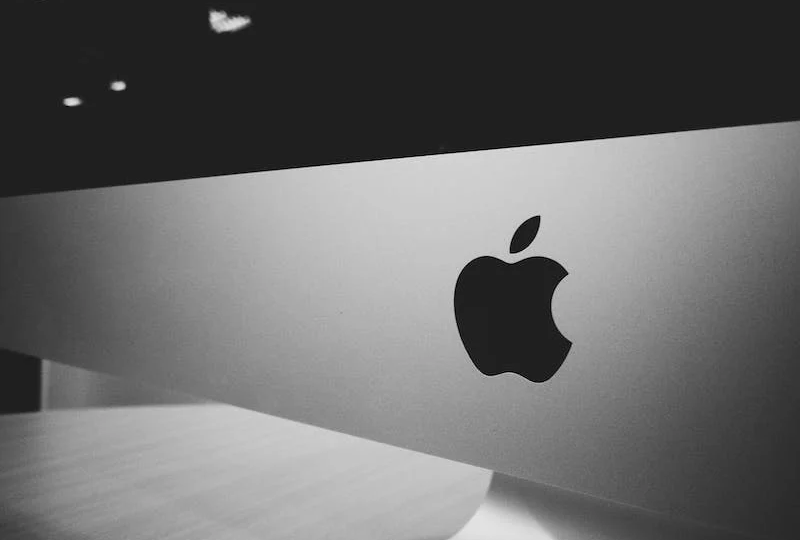Apple Inc. has long stood as a beacon of innovation, consistently challenging and expanding the horizons of consumer technology. Each product launch is an opportunity for Apple to polish and redefine its devices, often raising the bar for the entire industry. As they roll out new features that blend sophistication with simplicity, users enjoy an ever-more intuitive and seamless experience.
It’s this commitment to pushing the envelope that makes Apple products a preferred choice for many, including the discerning patrons of non UK casinos accepting UK players. These individuals, who appreciate the fine balance of elegance, performance, and reliability in their tech, find a similar ethos in their gaming experiences.
The advanced security and seamless operation of Apple’s latest devices, such as the iPhone 15 Pro, offer the perfect platform for those looking to engage with international online gaming platforms securely and efficiently, reflecting the global and inclusive spirit of both Apple and the wider digital entertainment industry.
The M3 Chip: A Leap in Silicon Engineering
Specifications of M3 Chip Lineup
| Feature | M3 | M3 Pro | M3 Max |
| Process Node | 3nm | 3nm | 3nm |
| CPU Cores | 8 | 12 | 16 |
| GPU Cores | 10 | 18 | Up to 40 |
| Unified Memory | Up to 24 GB | Up to 36 GB | Up to 128 GB |
The latest M3 chip from Apple is a marvel of engineering, utilizing a cutting-edge 3-nanometer process. With a substantial increase in both P and E core speeds, Apple’s CPU performance charts continue to escalate, leaving competitors trailing in the wake of their silicon prowess.
Advanced Graphics: Ray Tracing and Mesh Shaders
With the introduction of the M3 chip lineup, Apple has taken a significant step forward in graphics capabilities. Incorporating hardware-accelerated ray tracing and mesh shaders brings Mac devices up to speed with the latest in visual technology, typically found in high-end gaming PCs.
These advancements are poised to revolutionize gaming on Mac, providing the potential for more realistic lighting, shadows, and reflections. It’s not just gamers who stand to benefit; professional graphic artists and designers will find that these features greatly enhance the realism and quality of 3D rendering and visual effects, offering new realms of creative possibilities within the Apple ecosystem.
Dynamic Caching and Unified Memory
Apple’s innovative approach to memory allocation reaches new heights with dynamic caching on the M3 chip. By intelligently balancing the memory use between the CPU and GPU, the system ensures that resources are not just available but are allocated in the most efficient way possible.
This dynamic allocation is particularly beneficial in demanding tasks that fluctuate in their resource needs, allowing for smoother multitasking and optimized performance across the board.
As a result, whether you’re editing a complex video project, working with large datasets, or engaging in graphics-intensive gaming, the system adapts in real-time to deliver the best possible experience. This smart memory management is a testament to Apple’s dedication to creating not just more powerful, but also smarter and more intuitive devices.
Display & Battery: Apple’s Untouchable Duo
Liquid Retina XDR Display
| Attribute | Specification |
| Brightness (HDR) | Up to 1600 nits |
| Brightness (SDR) | 600 nits |
| Refresh Rate | 120Hz |
The display technology in Apple’s MacBooks continues to be unrivalled, with a focus on high dynamic range and refresh rates. When paired with the battery efficiency improvements of the M3 chips, users receive a premium visual experience without compromising on battery life.
Performance Per Watt: Setting Industry Standards
Apple has consistently prioritized the balance between performance and energy consumption, a feat that has not only impressed users but also set a benchmark for the industry.
The latest M3 chips, using a 3-nanometer process, are the embodiment of this principle, offering a performance that doesn’t falter when the device is running on battery power.
This performance per watt superiority is a testament to Apple’s engineering prowess, allowing for thinner, lighter devices that do not compromise on power or battery life, an advantage that has become a cornerstone of Apple’s product appeal.
Design Philosophy: The Apple Aesthetic
Apple’s design philosophy is rooted in minimalism, where form meets function in the most streamlined manner. Despite eschewing features like touchscreens, which are common in competitors’ laptops, Apple’s design language continues to attract users with its simplicity and elegance.
The Space Black finish, Liquid Retina XDR display, and the uniformity of the Apple ecosystem speak volumes about the company’s dedication to a design that enhances user experience without unnecessary complexity. This consistent aesthetic across all Apple devices fosters a loyal user base that values the brand’s commitment to its design ideals.
Future Prospects: What’s Next for Apple?
As the technological landscape evolves, Apple is not the only giant striving for innovation. With Qualcomm unveiling the Snapdragon X Elite and Microsoft making strides with Windows on ARM, the competition is heating up.
However, Apple’s triennial leaps in chip performance, along with their pioneering features, keep the industry on its toes and consumers eagerly awaiting the next big thing. The speculation around Apple’s future moves is as much about its technological advancements as it is about its ability to redefine and lead the market with each new release. Whether it’s through hardware breakthroughs or software enhancements, the question on everyone’s mind remains: What will Apple think of next?

Conclusion
Apple’s innovation is not always about being the first but about being the most effective. From the silicon at the heart of their devices to the finishing coat of their hardware, Apple’s innovations are characterised by a synergy of design and functionality.
As they continue to refine their technology, Apple stands as a steadfast symbol of progress in the consumer electronics market. Whether it’s the raw power of their M3 chip lineup or the dazzling brightness of their Liquid Retina XDR displays, Apple’s contributions push not just the company, but the entire industry forward.
FAQ
What is the Apple M3 chip and how does it improve performance?
The Apple M3 chip is a cutting-edge processor that significantly boosts both CPU and GPU capabilities, providing enhanced performance with greater power efficiency.
Can the M3 chip handle high-end graphics like ray tracing?
Absolutely, with the M3 chip, Apple now supports advanced graphics features such as hardware-accelerated ray tracing and mesh shaders, bringing Mac graphics capabilities in line with high-end gaming PCs.
What is dynamic caching in the context of Apple’s unified memory?
Dynamic caching refers to Apple’s innovative approach to memory management that dynamically adjusts the allocation of memory between the CPU and GPU, optimizing performance for a variety of tasks.
How does Apple’s Liquid Retina XDR display contribute to the user experience?
Apple’s Liquid Retina XDR displays deliver an unparalleled visual experience with high brightness levels, superior HDR support, and a smooth 120Hz refresh rate, enhancing the user experience without sacrificing battery performance.
Does Apple’s design philosophy impact the functionality of its devices?
Yes, Apple’s minimalist and functional design philosophy not only defines the aesthetic of its devices but also ensures a user-friendly experience, even without including features like touchscreens.
What future advancements are expected from Apple following the M3 chip?
Following the release of the M3 chip, expectations are high for Apple to continue its trend of innovative breakthroughs that could potentially redefine performance benchmarks and lead the market in new technological directions.








